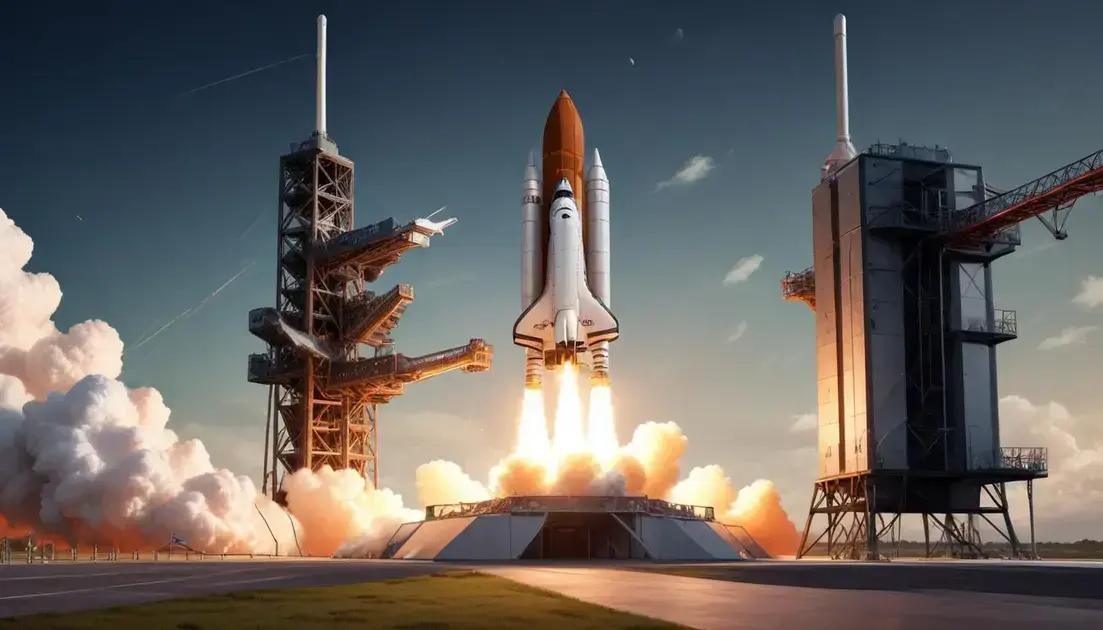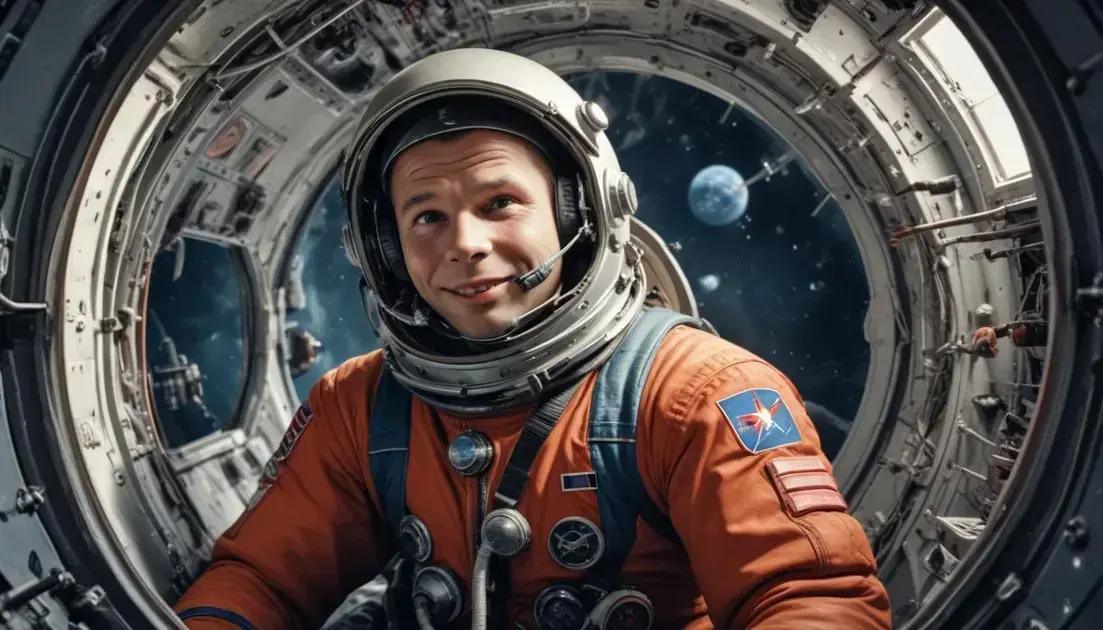
International Space Station: Multilateral Cooperation
The International Space Station (ISS) serves as a vital hub for scientific research and international collaboration. It faces challenges such as funding and technology updates, while providing opportunities for groundbreaking discoveries and training for future space missions. Through ongoing studies in microgravity, the ISS enhances our understanding of health, materials, and plant growth, paving the way for deeper space exploration and inspiring future generations of scientists and astronauts.
In the vast expanse of the universe, the International Space Station stands as a beacon of hope and unity. This unique collaboration showcases how countries can work together to push the boundaries of science and exploration.
The Role of International Collaboration in Space
The Role of International Collaboration in Space is crucial for advancing our understanding of the universe. Countries come together to share knowledge and resources, which leads to better scientific outcomes. This teamwork fosters peace and unity amidst competition.
Space missions often need multiple nations working in sync. For instance, the International Space Station relies on technology and expertise from the USA, Europe, Russia, and Japan. This collaboration allows researchers to conduct experiments in microgravity that wouldn’t be possible on Earth.
Joint missions also promote friendship among nations. When astronauts work together, they build strong bonds. These relationships can lead to cooperation in other areas, such as technology and education.
Furthermore, combining resources reduces costs and increases efficiency. Instead of competing for limited funds, nations can pool their money to support big projects. This approach can lead to groundbreaking discoveries in space science.
In short, international collaboration strengthens space exploration. It allows for more ambitious goals and innovative solutions. Together, we can achieve more than we ever could alone.
Scientific Achievements of the ISS
The International Space Station (ISS) has made some amazing scientific achievements. It serves as a unique laboratory in space where researchers from around the world can conduct experiments. These experiments help us understand how life reacts in microgravity.
One of the major breakthroughs is studying human health in space. Scientists discovered how microgravity affects bones and muscles. This research is vital, especially for future long-term space travel. The findings can also help improve health care on Earth.
Another important achievement is the study of materials. The ISS allows scientists to test new materials in ways that aren’t possible on Earth. These tests lead to advancements in technology, such as better batteries and improved tools.
The ISS has also helped in understanding the effects of space on plants. Researchers grow various plants to see how they adapt without gravity. These studies could support future missions by providing food for astronauts.
Lastly, the international collaboration on the ISS has led to great discoveries in physics. Scientists have conducted experiments on fluid dynamics and combustion. This knowledge can help create better technology for everyday life.
All these scientific achievements highlight the value of the ISS. It’s a platform not just for space exploration but for learning about our world and beyond.
Cultural Exchanges and their Importance
Cultural exchanges play a vital role in fostering understanding and friendship among nations. When people from different cultures interact, they share traditions, food, and stories. This exchange enriches lives and builds connections that last.
Programs that promote cultural exchanges can involve students, artists, or even scientists. For instance, students studying abroad gain firsthand experiences. They learn new languages and customs, which broadens their horizons. These experiences shape their views and make them more open-minded.
Art and music are also powerful tools in cultural exchanges. When artists collaborate, they blend styles and create unique pieces. These artworks tell stories that resonate across borders. Music festivals featuring international artists celebrate diversity and bring people together.
Moreover, cultural exchanges can lead to economic benefits. Countries that maintain relationships through cultural understanding are more likely to trade. Tourists visit places where they feel a connection, which boosts local economies.
Lastly, sharing cultures helps break down stereotypes. When people engage with others, they see past the headlines. They realize that while we may come from different backgrounds, our hopes and dreams are often the same.
Future of the International Space Station
The future of the International Space Station (ISS) looks bright as it continues to evolve. The ISS has been a hub for science and cooperation for over two decades. But what’s next for this incredible station?
First, the ISS will keep supporting scientific research. Scientists will conduct more experiments in microgravity. This ongoing research helps us learn about everything from human health to new materials.
Next, new technology will be developed. Advanced systems will improve life on the ISS, making it safer and more efficient. Innovations in life support and energy use are just a few examples.
In addition, the ISS will pave the way for space exploration. It acts as a training ground for astronauts heading to the Moon and Mars. Future missions will use knowledge gained from living and working in space on the ISS.
Also, international partnerships will expand. Countries can collaborate on projects that benefit humanity. These partnerships will strengthen relationships and open new doors in space exploration.
Finally, the ISS will help inspire the next generation. With more educational programs, students can engage with space science. By sharing stories and discoveries, we can excite young minds about the possibilities of space.
Challenges and Opportunities
In the realm of space exploration, there are challenges and opportunities with the International Space Station (ISS). As we venture further into the cosmos, understanding these aspects is crucial.
One major challenge is funding. Maintaining and operating the ISS requires a significant budget. Countries must cooperate to share costs. This can sometimes lead to debates about priorities and resources.
Another challenge is technology. While the ISS has advanced systems, they need regular updates. Ensuring everything works smoothly in space can be tricky. Equipment failure can derail important experiments and research.
Health risks for astronauts are also a concern. Living in microgravity affects bones, muscles, and overall health. Researchers must find ways to keep astronauts safe during long missions. This includes studying nutrition and exercise in space.
However, there are great opportunities as well. The ISS serves as a platform for international collaboration. Countries working together can achieve more than going solo. Sharing resources and knowledge leads to exciting discoveries.
Moreover, student involvement in space science is increasing. Programs that connect students with astronauts help inspire future scientists and engineers. This interest can lead to innovations that benefit life on Earth.
Finally, the ISS can play a key role in future missions to the Moon and Mars. Lessons learned from the ISS will guide our efforts in deep space exploration. Overall, while there are challenges, the opportunities to learn and grow are endless.
Conclusion
In conclusion, the International Space Station (ISS) represents a remarkable blend of challenges and opportunities. While funding, technology, and health risks pose significant hurdles, the benefits of international collaboration and innovation shine brightly.
By sharing resources and knowledge, countries can make groundbreaking discoveries. The ISS has become a vital stepping stone for future missions to the Moon and Mars. It not only teaches us about space but also inspires new generations of scientists and explorers.
Ultimately, the ISS symbolizes what humanity can achieve together. As we face challenges, we also open doors to opportunities for exploration and understanding. The journey into space continues, and with it, the promise of a brighter future for all.


